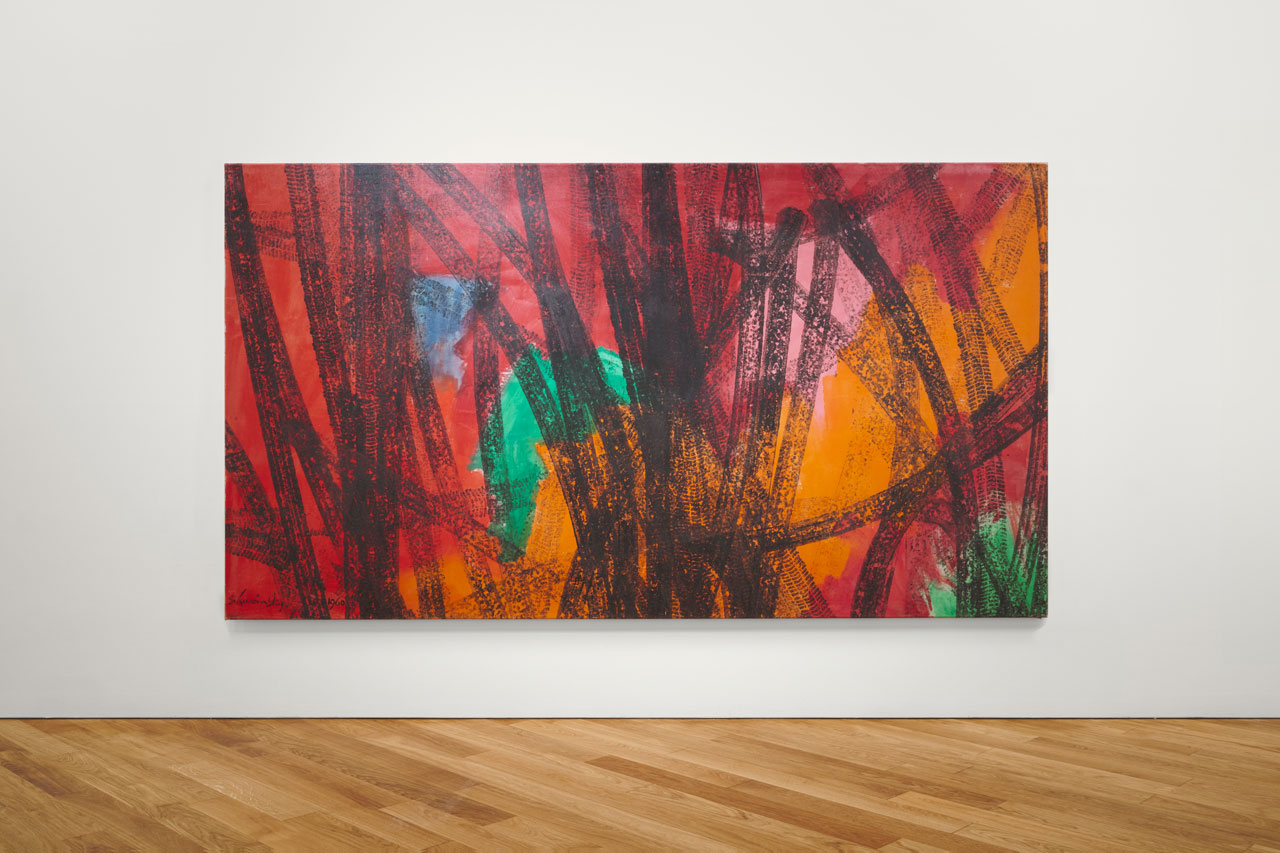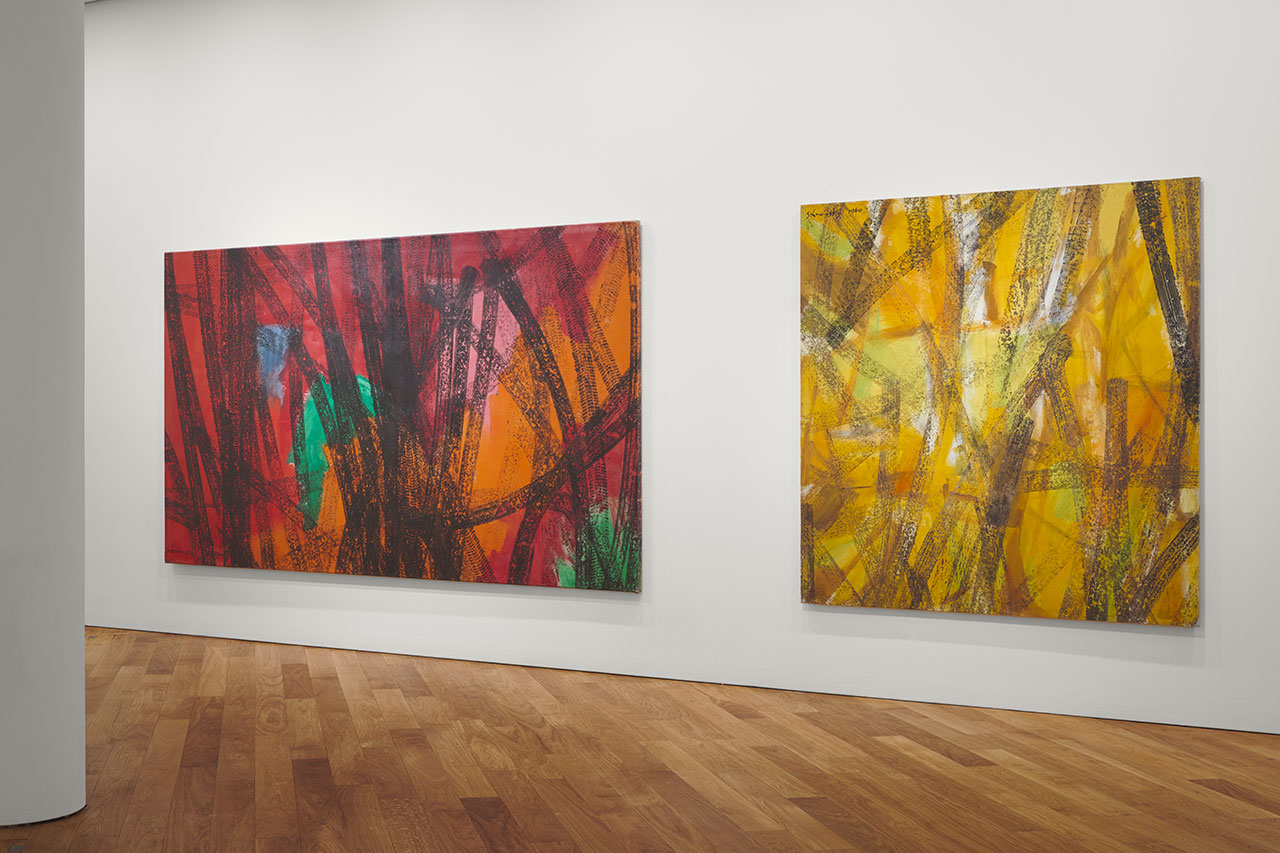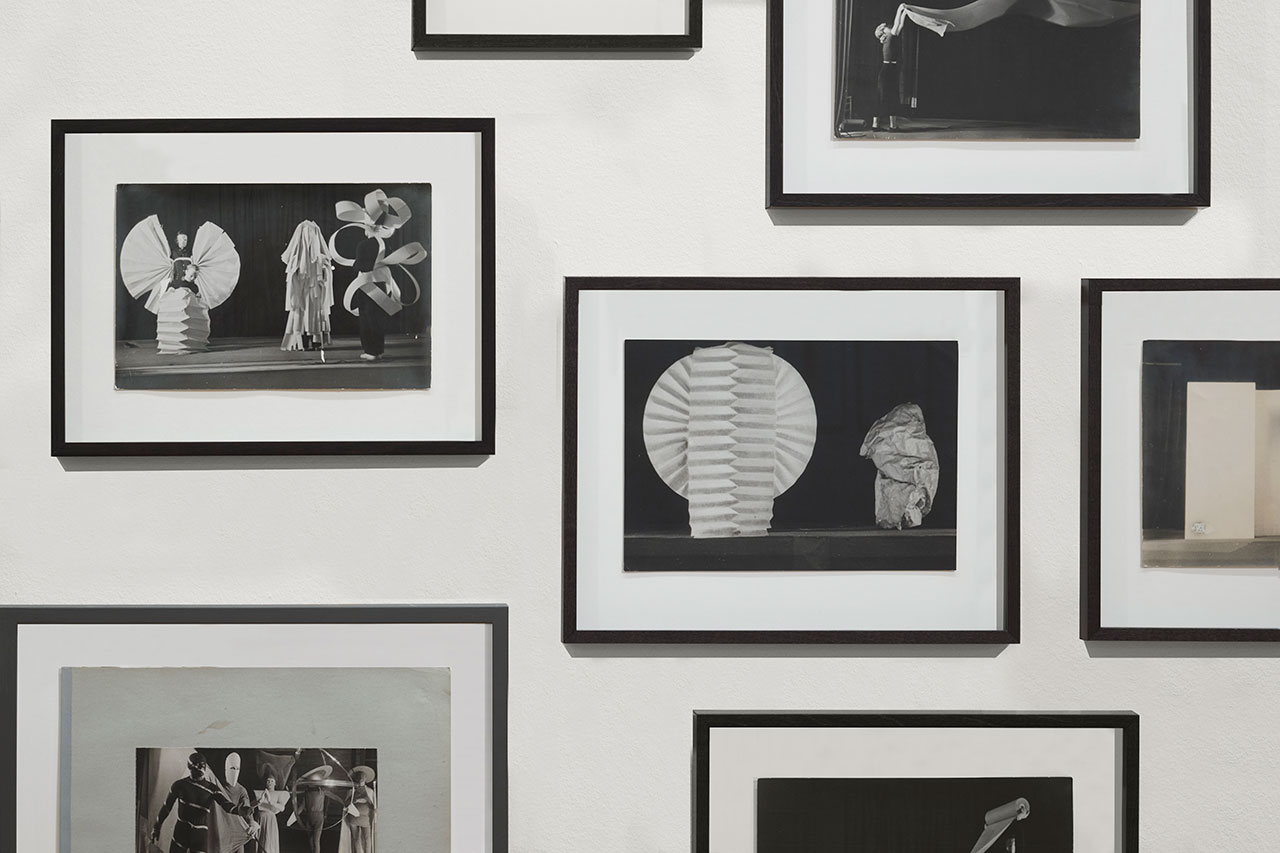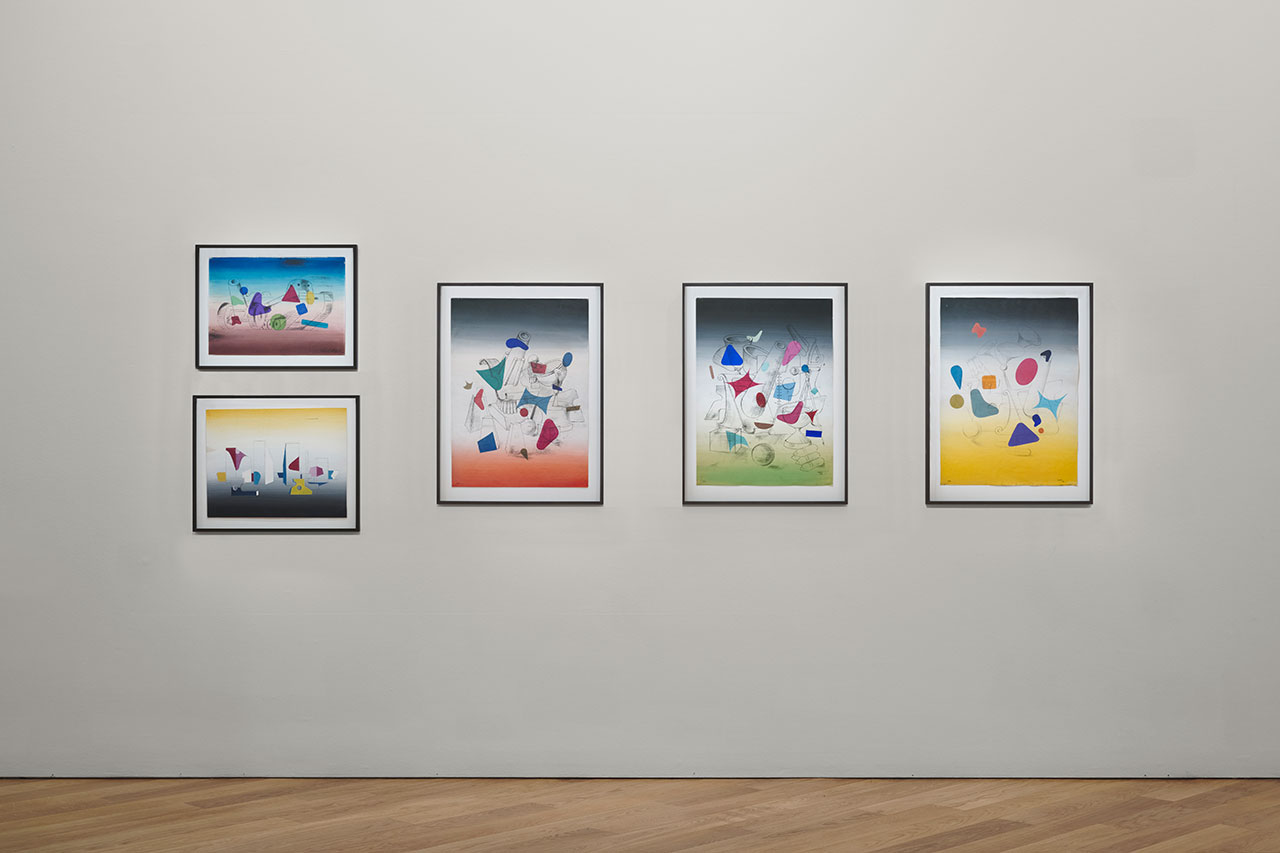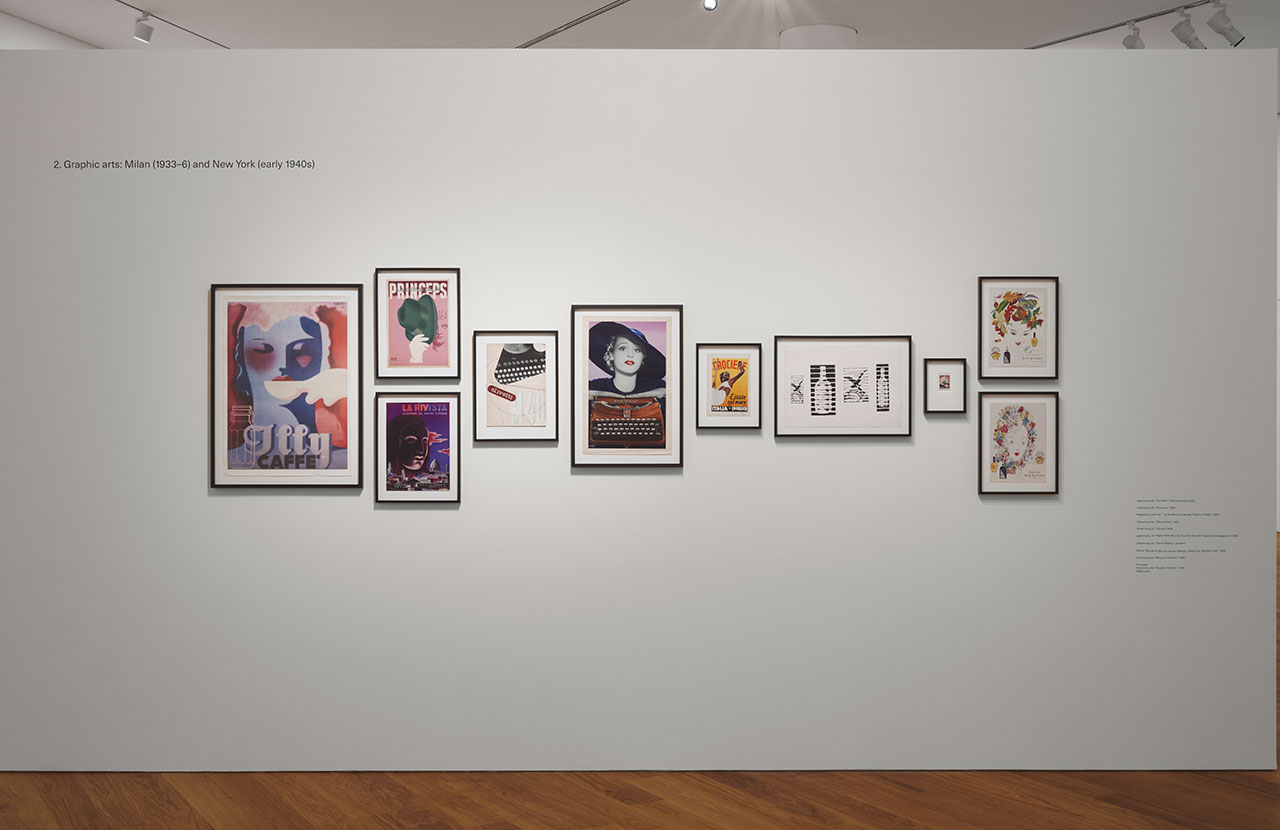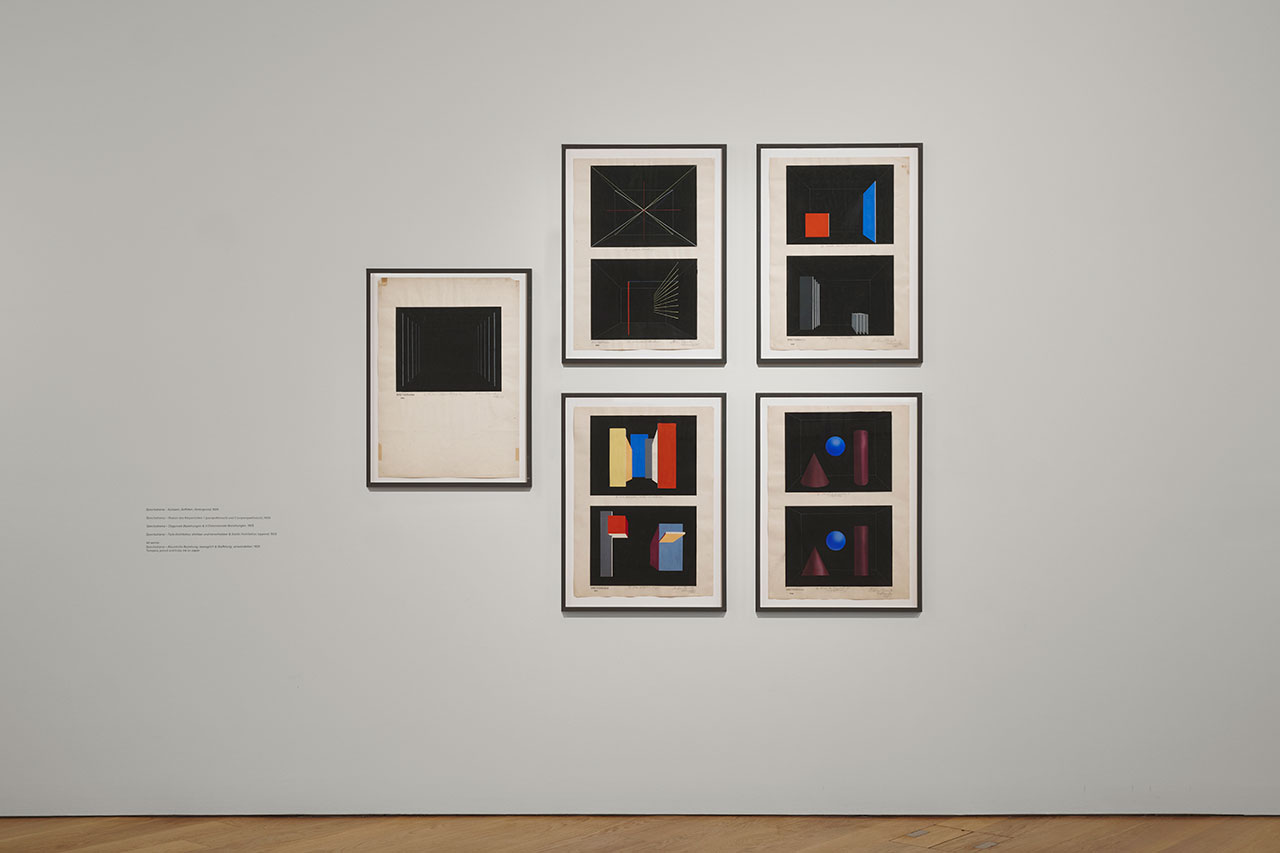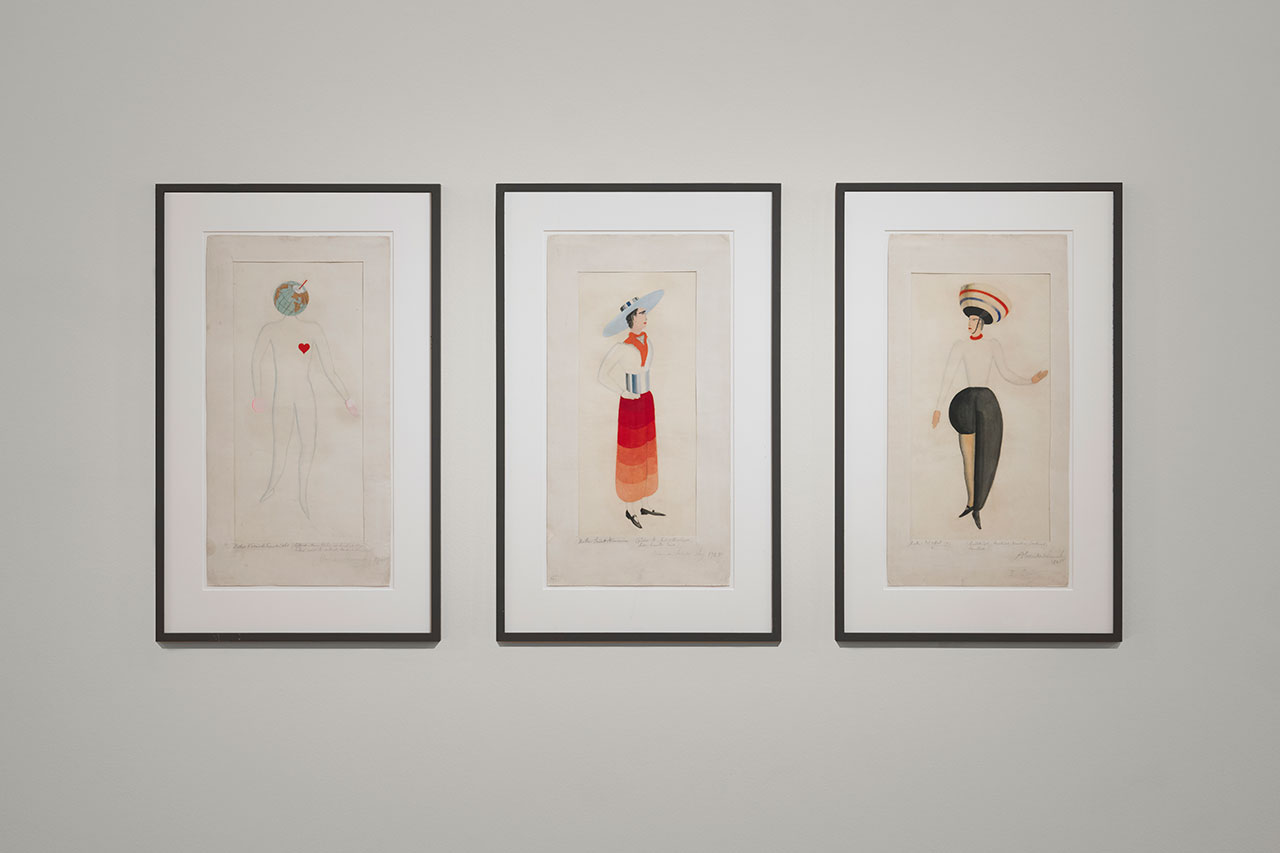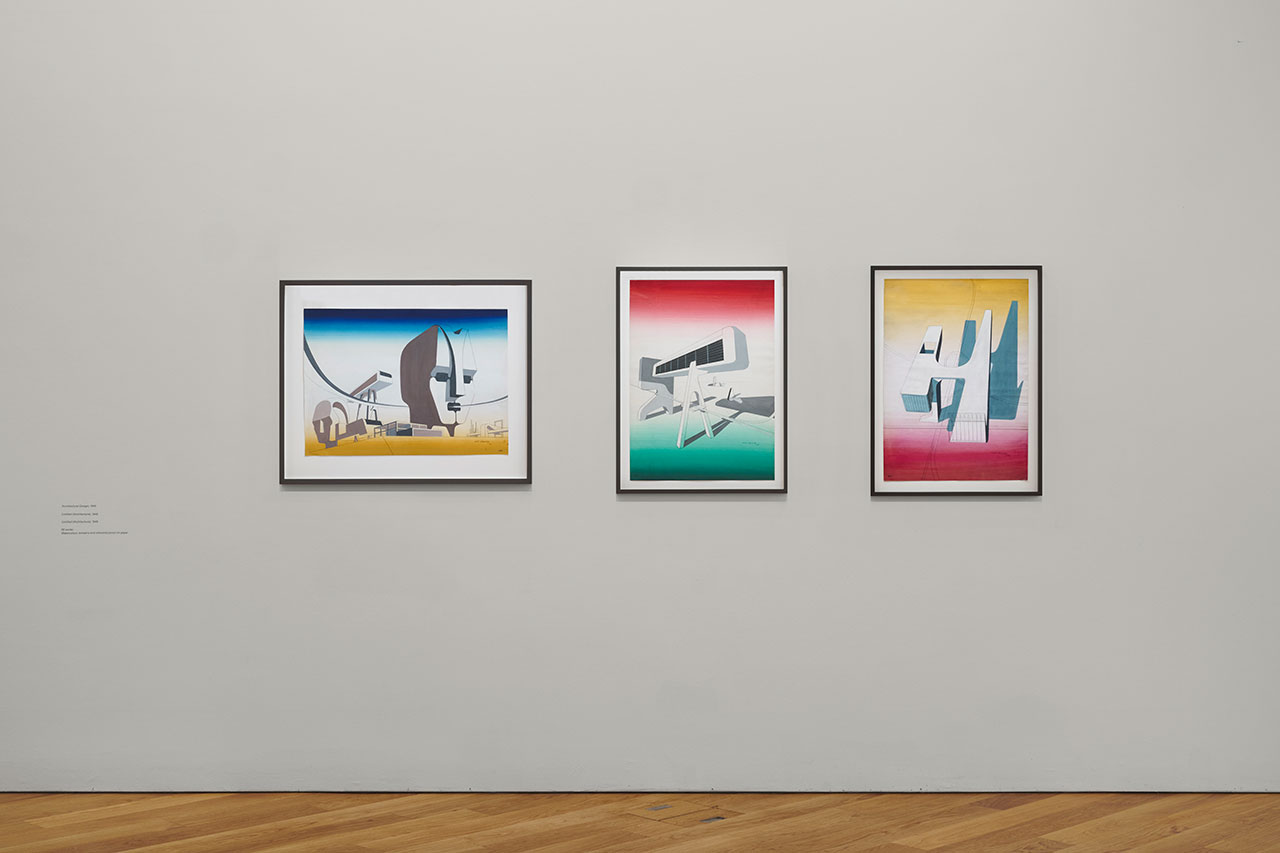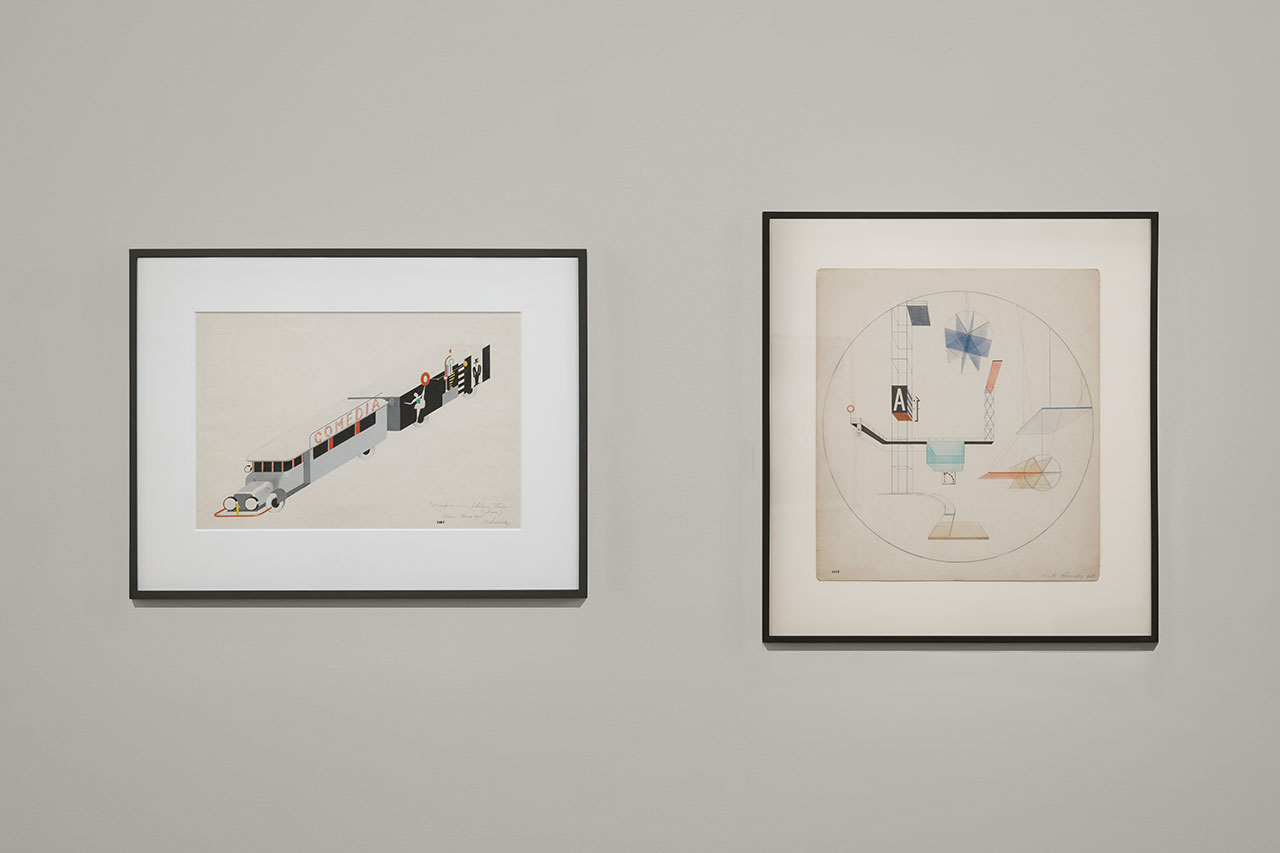TRIBUTE: Xanti Schawinsky-Play, Life, Illusion (a Retrospective)
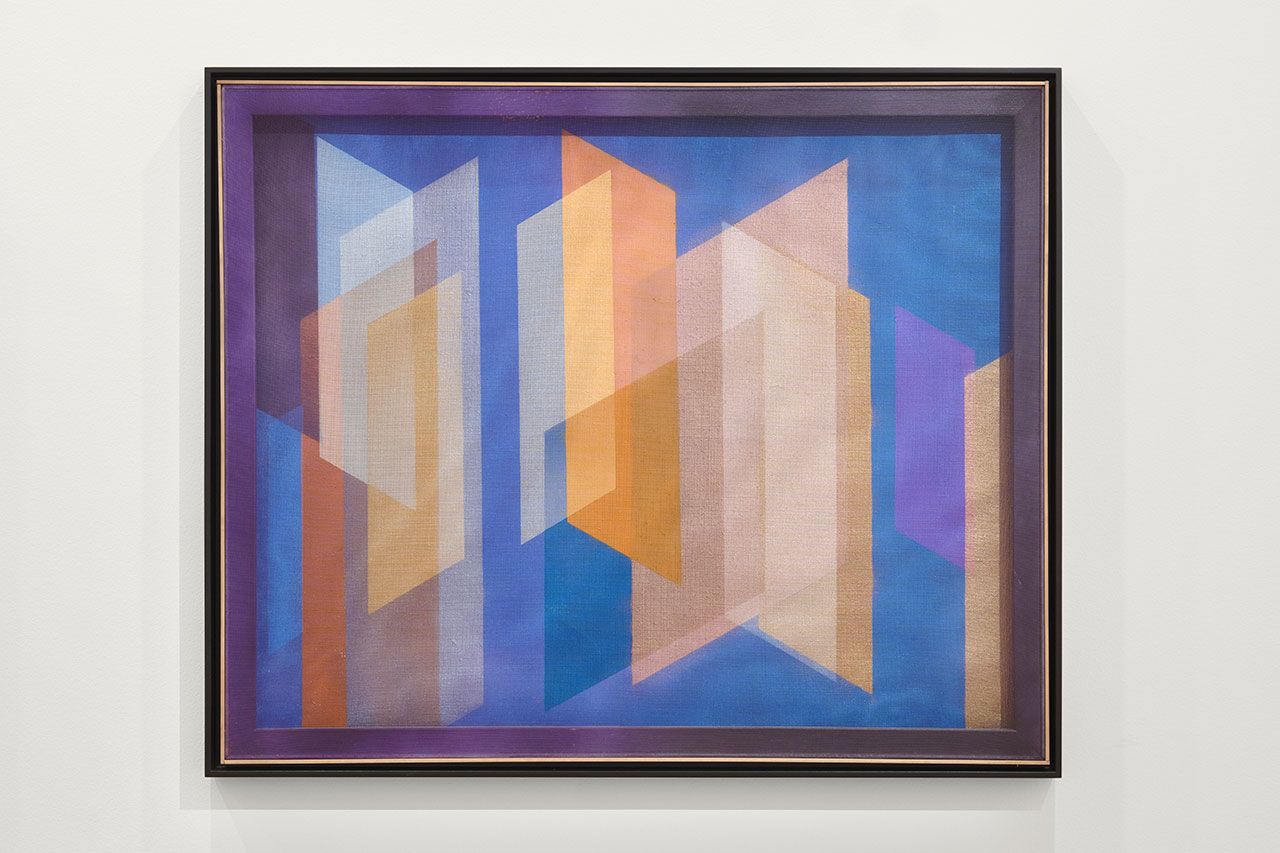 The political unrest that roiled Western Europe during the first half of the twentieth century profoundly marked the life and career of Xanti (Alexander Victor) Schawinsky. The son of a Polish émigré family of Jewish merchants, “Xanti” was born and spent his childhood in Basel, Switzerland; at the outset of World War I, the Schawinskys relocated to Zurich. Xanti’s subsequent educational and professional paths took him to Germany, Italy, and, finally, to the United States in 1936. In his later years, Schawinsky reversed course, dividing his time between New York, Switzerland, and Italy.
The political unrest that roiled Western Europe during the first half of the twentieth century profoundly marked the life and career of Xanti (Alexander Victor) Schawinsky. The son of a Polish émigré family of Jewish merchants, “Xanti” was born and spent his childhood in Basel, Switzerland; at the outset of World War I, the Schawinskys relocated to Zurich. Xanti’s subsequent educational and professional paths took him to Germany, Italy, and, finally, to the United States in 1936. In his later years, Schawinsky reversed course, dividing his time between New York, Switzerland, and Italy.
By Efi Michalarou
Photo: Mudam Archive
“Xanti Schawinsky: Play, Life, Illusion – a Retrospective” is the first retrospective dedicated to the Swiss American artist Alexander ‘Xanti’ Schawinsky outside his native country, Switzerland. Marked by the spirit of the Bauhaus, where the artist studied in the 1920s, and of the Black Mountain College (USA), where he taught in the latter half of the 1930s, Schawinsky’s work is characterised by its multidisciplinary nature: theatre, scenography, photography, graphic design, painting and typography are among the fields the artist explored during a career spanning six decades. Formally diverse and guided by constant experimentation, Schawinsky’s work bears close and varied connections with main movements of pre- and post-war modernism in the United States and Europe – the continent the artist left to escape Nazism and fascism in 1936, and where he returned to in the 1960s. His practice is emblematic of the transatlantic artistic exchanges sparked by the Second World War that left a lasting impression on art history, of which Schawinsky was a key player. This Retrospective covers Schawinsky’s artistic trajectory from his early pieces, driven by concerns around scenic space and the relationship between man and machine, to the pictorial work he developed from the 1940s onwards, gradually integrating a processual and performative approach to the medium of painting. The exhibition also highlights the graphic artwork that Schawinsky created during the time he spent in Milan (1933–36), as well as his experimental pieces in the field of theatre around his concept of ‘Spectodrama’, through which he wanted to gather ‘colour and shape, movement and lights, sound and words, pantomime and music, graphic art and improvisation’. The pioneering role that Schawinsky played in the development of performance art still echoes in the artistic practice of today. The exhibition has the following sections: The Bauhaus years (1924–9): In 1924, at the age of twenty, Xanti Schawinsky began his studies at the Bauhaus in Weimar, Germany. Founded in 1919 by Walter Gropius, the Bauhaus was a multidisciplinary school that is now considered one of the main hubs of architecture, visual arts, theatre and design in the twentieth century and one of the birthplaces of modern art and the avant-garde movements. Among Schawinsky’s teachers were painter Paul Klee (1879–1940), architect Walter Gropius (1883–1969) and painter and photographer László Moholy-Nagy (1895–1946). At the Bauhaus, which moved from Weimar to Dessau in 1925, Schawinsky was mainly involved in the theatre workshop led by Oskar Schlemmer (1888–1943). It was at this time that Schawinsky began to work on his concept of ‘Spectodrama’ – a forerunner of total theatre –, and it was not long before he also brought his experiments to the stage. The broad themes that would be present in his future work could already be seen here in an embryonic form, namely the elaboration of dramatic spaces and a concern with the relationship between man and machine. Parallel to his studies, his stage experimentations and his paintings, Schawinsky devoted part of his time to his passion for music, playing the saxophone in the Bauhaus orchestra. In 1926, he worked for one season as a set designer at the municipal theatre in Zwickau (Germany). Upon his return to the Bauhaus in 1927, he gave courses based on the practical experience he had gained there. Graphic arts: Milan (1933–6) and New York (early 1940s): After attacks by the National Socialist press began in 1931 and a wave of political arrests ensued, Schawinsky fled Germany in 1933. He went first to Switzerland, where he worked in Zurich and Ascona, before continuing to Milan later that year. There, he made a living mainly as a graphic designer. With his innovative, Bauhaus-influenced approach to typography and photography, Schawinsky contributed to the renewal of visual advertising in Italy. During this period, he also created several typefaces, some of which have since been digitised (for example, under the name Xanti32). Numerous commissions for Studio Boggeri – for brands such as Cinzano, Motta, Sanpellegrino and Olivetti – brought him recognition and commercial success. It was also around this time that a small group around Walter Gropius, including Schawinsky, came up with the idea of reopening the Bauhaus in Italy in a new form. To bring this project to fruition, they were willing to work together with the government of Benito Mussolini (1883–1945). In their attempts to get the regime on side, the members of the Bauhaus became blind to the political consequences of colluding with Mussolini. However, with the mounting political repression in the country, the project ultimately fell apart. Given the historical and political context, it is difficult to know how to interpret Schawinsky’s cover design for a 1934 issue of the fascist magazine “La rivista illustrata del Popolo d’Italia” and the poster bearing Mussolini’s likeness that it originally contained. Was this a concession made by the artist to the fascist regime to be able to continue working freely? Or was it an assignment carried out under duress and against his political convictions either due to his professional relationship with Studio Boggeri or out of material need? A few years later, when Schawinsky was living in New York during the war, he worked as a graphic designer again, mainly on ad campaigns – for Bourjois perfumes, for example – but also for the U.S. Army. He was also involved in the ‘Artists for Victory’ organisation, which issued a series of postage stamps designed by artists, the proceeds of which went to the American war effort during the Second World War.
Black Mountain College (1936–38): In 1936, as fascist Italy was drawing closer to Nazi Germany, Schawinsky fled Milan. He went first to London and then, that same year, to the United States, following an invitation from Josef Albers to teach at Black Mountain College, an experimental, transdisciplinary college founded in 1933 in Black Mountain, North Carolina. Highly receptive to modernist ideas and home to many European artists in exile, this small art school gave pride of place to the ideas of the Bauhaus and to the forms of expression that would later give rise to ‘happenings’ and performance art. Among its best-known teachers and students were composer John Cage, choreographer Merce Cunningham and sculptor Ruth Asawa. Heading a programme called ‘Stage Studies’, Schawinsky used and refined his ideas from his Bauhaus years around scenic space and the notion of the theatre as a laboratory for experimentation. Under the generic title ‘Spectodrama’, he staged several plays in collaboration with students, including “Spectodrama: Play, Life, Illusion” (1936) and “Danse Macabre: A Sociological Study” (1938). These stage creations explored fundamental elements of the performing arts, such as movement, light, sound, colour and space. In addition to pantomime and dance, these pieces used multimedia components (projections, sound, etc.) and ideas from various scientific and scholarly disciplines. New York (1938–49): In 1938, Schawinsky left North Carolina for New York to work as a graphic designer and painting teacher at New York University and City College. A year later, he became an American citizen. In early 1940s New York, Schawinsky was confronted with the war, both directly and indirectly. As a designer, he created camouflage patterns for the U.S. Air Force, but the war also influenced his artistic production. His best-known series of works from this period, exhibited in the United States and abroad in the 1940s and 1950s, is likely “Faces of War” (1942). Combining watercolour and drawing, these works on paper bear titles evoking various military ranks and functions. They depict faces composed of weapons and military equipment, set against backgrounds with colour gradients reminiscent of Schawinsky’s advertising designs and abstract, camouflage-like patterns. These brightly coloured and unsettling machine-men convey a deeply ambivalent vision of war and are a direct response to contemporaneous political events, which is rare in Schawinsky’s work. Processual pictorial works (1949–79): From the late 1940s onwards, Schawinsky devoted most of his time to painting. From 1949 to 1979, Schawinsky produced several series of works that emphasised the performative nature of painting. His aim was to involve the body in the production of the work in as many ways as possible, moving beyond the traditional tools of the practice, such as brush, easel, paint and canvas. In this way, the production process became as important as the finished work. During the same period, Schawinsky experimented with ways of creating paintings without paint. For instance, his “Smoke Paintings” (1964) were made by fixing smoke to fibreboard. Another example is his photographic series “Light Paintings” (1950), where Schawinsky played with photosensitive surfaces and treated them like paintings – resulting in painterly compositions where traces of light in the photographic print call to mind expressive brushstrokes. But his most spectacular work began in the 1950s: for the “Track Paintings” series, he drove his car over oil paint and then across canvases spread out on the ground. Here it was the car itself, and more specifically its tyres, that were the ‘brushes’. Using this unusual technique, he created works up to five metres wide and attracted widespread public interest.
Photo: View of the exhibition “Xanti Schawinsky: Play, Life, Illusion — a Retrospective”, Mudam Luxembourg, 2024-25, Photo: Mareike Tocha, © Mudam Luxembourg
Info: Curator: Raphael Gygax, Mudam Luxembourg – Musée d’Art Moderne Grand-Duc Jean, 3 Park Dräi Eechelen, Luxembourg-Kirchberg, Duration: 12/7/2024-5/1/2025, Days & Hours: Tue & Thu-Sun 10:00-18:00, Wed 10:00-21:00, www.mudam.com/
